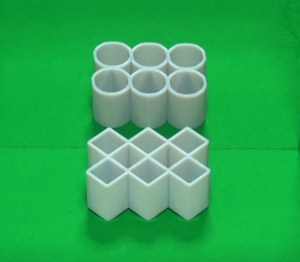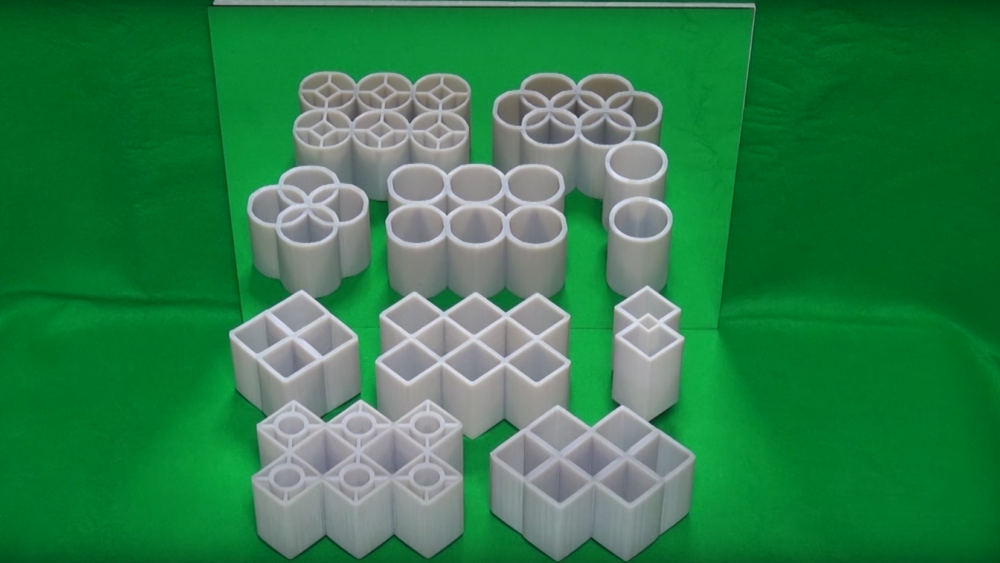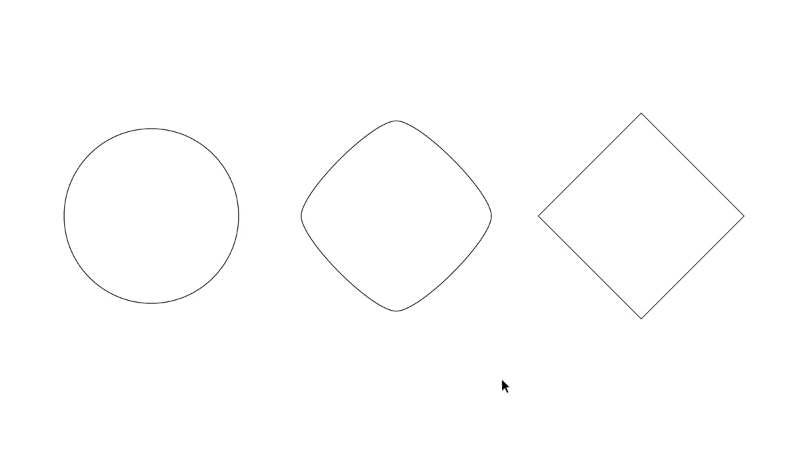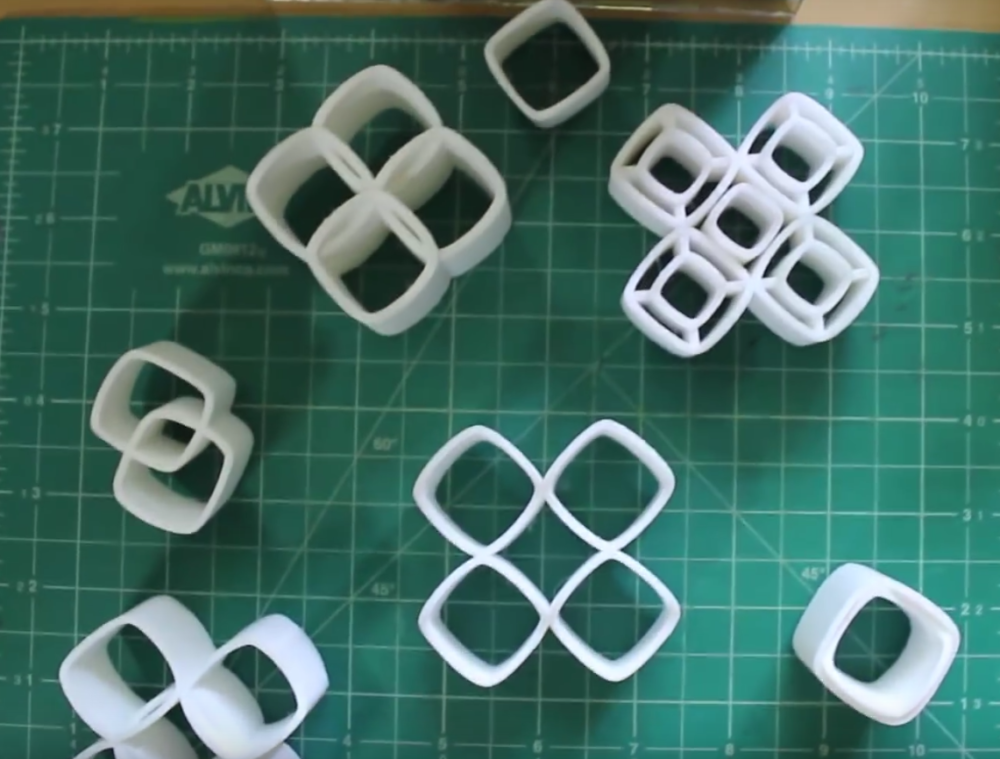Last week an entry for the Best Illusion of the Year Contest called the Ambiguous Cylinder Illusion from Japan’s Kokichi Sugihara confused and delighted viewers all over the world. The video showed six plastic cylinders stuck together, and when they were placed in front of a mirror they inexplicably became squares. When the cylinders were rotated, the reflection finally turned into cylinders, only to have the actual plastic cylinders become squares. As if the amazing visual trick wasn’t impressive enough, Sugihara then outdid himself by adding several different types of groupings even more complicated and unbelievable than the original. It left almost everyone who saw it scratching their heads, and the internet was pretty desperate for answers.
YouTube maker Devin Montes quickly posted a brief video explaining the illusion using some 3D printed cylinders to his Make Anything channel. He then followed it up with a more in-depth explanation of how the illusion works, and how he made the 3D printed objects that explain how it was done. It turns out the trick is actually pretty simple, it has to do with forced perspective and an unconventional shape that Montes calls a “squircle”. You see, while we watch the video and see a grouping of cylinders and their square reflection, in reality the object is a combination of a circle and a square that has an asymmetrical shape that distorts how it looks based on the angle that the squircle is being viewed. The camera is angled so we see a cylinder while the mirror is angled so it sees the square shape. If this sound confusing, don’t worry, you’re not dumb, it is kind of confusing.
“They look like vertical cylinders, but their sections appear to be different; in one view they appear to be rectangles, while in the other view they appear to be circles. We cannot correct our interpretations although we logically know that they come from the same objects. Even if the object is rotated in front of a viewer, it is difficult to understand the true shape of the object,” explained the website for the Best Illusion of the Year Contest.
The trick is remarkably clever, and relies on both the reflection of the object and the limitations of the human brain to accurately detect shape and perspective. Because we see in 3D, if an object is shaped just right, our senses can be fooled — really easily it turns out. Sugihara designed and created a half dozen amazing illusions using the same principles of the first, and they just get more complex and confusing. Even Montes had some problems figuring out exactly how one of the illusions worked and was unable to replicate it. While the Best Illusion of the Year won’t be awarded for another six months, it’s extremely hard to imagine that this one is going to be beat.
Here is the original video that Sugihara submitted to the Best Illusion of the Year Contest:
Montes had his work cut out for him when it came to replicating the illusion using his 3D printer. He figured out that the most important part of the trick was the actual squircle shape itself, and the rest was just some basic 3D modelling. To get the correct shape, Montes used Adobe Illustrator because it has a Blend tool that will generate the transitional shape between two paths. So by drawing a perfect circle, and a square, Montes was able to easily create the much needed squircle shape. Doing it this way saved him a ton of time trying to 3D model the shape using CAD software. He simply saved the squircle as a DXF file so it could be imported to SolidWorks and turned into a 3D printable model.
In his video Montes walks us through the entire design and 3D modelling process and even explains how he managed to print out the shape on his 3D printer. In order to get the shape the same on the top and bottom, he actually ended up designing some built-in supports so the shapes would print smoothly and not have to have a lot of post processing done to them, though he ended up using traditional supports for some of the more complicated shapes for the sake of brevity. He even shared the 3D printable model on Thingiverse so you can recreate the illusion on your own.
You can see the video here on Montes’ Make Anything YouTube channel:
There are a few other video explanations online, but Montes’ original video was first, and I think his explanation of how he managed to create the shape is a lot easier to understand. You can see more maker projects over on his YouTube channel Make Anything here, and you can get the 3D printable model here. You can read more about the original illusion here, and you can submit our own video to the Best Illusion of the Year Contest here. What your thoughts about this project? Discuss further in the 3D Prints Explain Illusion forum over at 3DPB.com.
Subscribe to Our Email Newsletter
Stay up-to-date on all the latest news from the 3D printing industry and receive information and offers from third party vendors.
Print Services
Upload your 3D Models and get them printed quickly and efficiently.
You May Also Like
3D Printing Predictions 2026: Industrial Production in Metal Additive Manufacturing
The industrial metal additive manufacturing world is splitting, with commoditization and lower-cost parts driving the production of millions of components for consumer electronics, machinery, dental, and beyond. Meanwhile, large parts...
Inside Xometry’s 2026 Outlook: Why AM Is Becoming Essential — and What’s Still Holding It Back
In the first part of this series, we spoke with Xometry’s Senior Vice President of Marketplace Operations, Mike Cavalieri, about how manufacturers are reshoring, diversifying their suppliers, and building more...
Top 10 Moonshot Ideas for 3D Printing’s Future
As the year comes to a close, it’s clear that additive manufacturing (AM) is entering a new phase. Costs are falling, supply chains are changing, government spending is rising, and...
3D Printing Predictions for 2026: Scaling AM Through Software
For several years, we have seen additive manufacturing software play a more central role in our industry. LPBF machines achieve higher yields and can produce thinner-walled parts thanks to the...


































